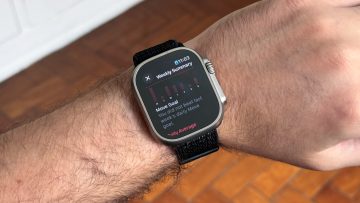A series of reports from separate sources claimed in the past few months that Apple is working on at least two individual smart glasses that will be released between 2022 and 2025. The mixed reality (MR) glasses are due as soon as next year, a headset that can display both virtual (VR) and augmented reality (AR) content. The AR glasses would look more like regular glasses, but that sort of sophistication would require more research and development, with a launch for the first-gen version set for 2025 at the earliest.
None of these leaks can be verified at this time. Unlike other companies, Apple doesn’t tease new products before they’re ready for the commercial debut. A few days ago, Facebook unveiled its own plans for wrist controllers that can “read” the user’s mind and initiate actions on the screen. Those controllers are to be used with VR and AR glasses, although the technology is in the early phases of development. Facebook could not say when or if it’ll ever be ready for mass-consumption. But there is one insider who released plenty of data about Apple’s MR and AR glasses in the past few days, and he has more information about the mixed reality device.
Ming-Chi Kuo has been a well-informed source of Apple scoops in previous years. Thanks to his connections to the supply chain that serves Apple, Kuo has made plenty of accurate predictions about the company’s plans.
In previous research notes this month, the analyst said that the MR glasses could cost $1,000 in 2,022 when it launches, saying that Apple is already working with a prototype. The device weighs between 200 and 300 grams, but Kuo said the company wants to reduce the weight to 100-200 grams. The glasses would feature Sony micro-OLED displays as well as independent computing power and storage, he said.
In a separate note, Kuo said the MR glasses would feature 15 cameras, including eight cameras for see-through AR experiences, six for “innovative biometrics,” and one camera for environmental detection. He then expanded on the headset’s sensors, claiming that the device would feature eye-tracking technology.
In his latest not for investors, Kuo details the MR headset’s weight and the lens technology that Apple plans to use. Seen by MacRumors, the new report claims that Apple will use Fresnel lenses inside the MR headset, just like most VR headsets. But Apple wants to keep the device’s weight under 150 grams.
Kuo says that most VR headsets rely on Fresnel lenses to enable ultra-short focal lengths, but the devices end up weighing 300-400 grams or more.
Apple’s MR device might use simpler lenses with a smaller field of view (FOV), as they would not deliver the same immersive experience as true VR headsets.
According to Kuo, Apple wants to use a hybrid Fresnel lens system for each eye, each featuring three stacked Fresnel lenses:
The purpose of this design is to improve FOV and reduce weight and thickness. We believe that Apple will use a hybrid Fresnel lens design further to enhance the Fresnel lens’s optical performance (e.g., improve vignetting and optical artifacts), and each hybrid Fresnel lens comprises three stacked Fresnel lenses.
We believe that Apple’s design will achieve a better balance between HMD’s FOV and form factor.
Apple will use lightweight plastic lenses and customized materials and coatings to match the light transmission of glass. Young Optics and Genius Electronic Optical are supposed to provide the parts. These types of components will be expensive, MacRumors points out. A report from The Information said a few weeks ago that the MR glasses would cost around $3,000, which is three times more expensive than Kuo’s previous estimates.








